Suchi Reddy’s Colossal “Look Here” Installation at the National Building Museum
An elliptical pavilion and reflective fractals encourage attendees to contemplate perspective in a larger-than-life center court

From waves of astonishment to moments of quiet reflection, the seventh Summer Block Party installation at Washington DC’s National Building Museum, Look Here by artist and architect Suchi Reddy, successfully activates a range of emotional response. Reddy, the founder of NYC-based studio Reddymade Architecture and Design, achieves this through an orchestral collision of proportion, perspective and context. She not only suspends reflective fractals in the museum’s gargantuan center court, but prescribes a pathway to approach them, complete with the powerful stops—that feature images of activist marches in DC—along the way. Reddy invites viewers to travel at their own pace, to linger, to reflect, and, most importantly, to question what they see and who they are. A practitioner of the mantra “form follows feeling,” Reddy demonstrates her values and asks others to consider their own.
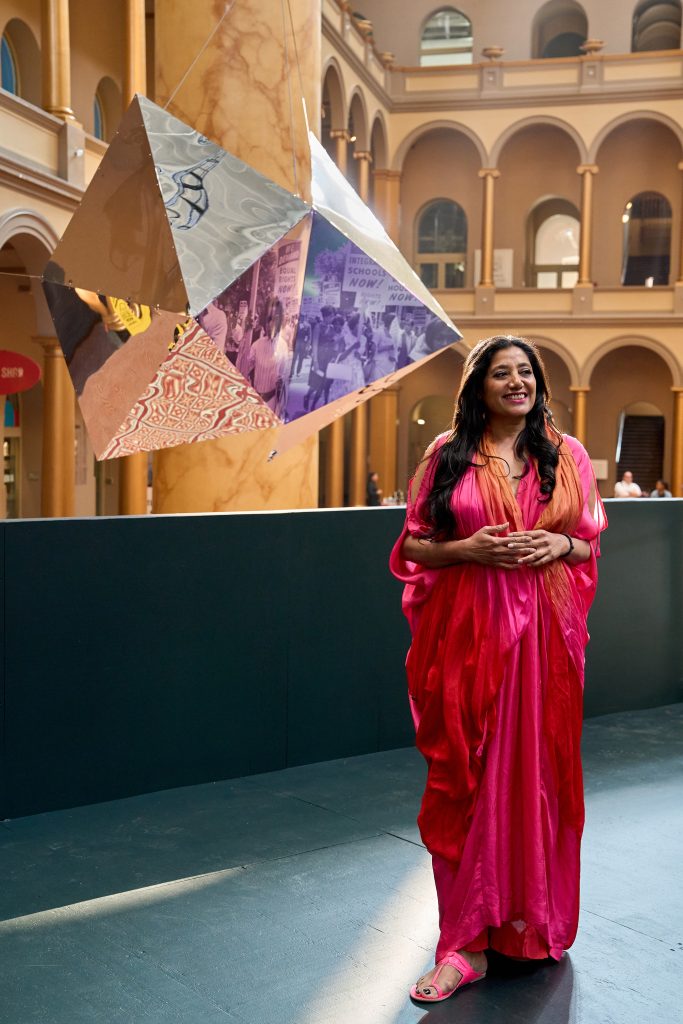
The exhibition came to fruition after Reddy’s first-ever visit to the National Building Museum. “I was watching an architect whose work that I love give a talk in the space and I was thinking about the scale of it and how it tends to dwarf everything and anything,” she tells COOL HUNTING. “It’s very unusual. For an architect, it presents the perfect challenge—to discover something new about what we do in terms of scale and proportion. When Aileen Fuchs, the president and executive director, and curator Cathy Frankel then asked me if I would be interested in doing the summer installation, the answer was a resounding yes.”
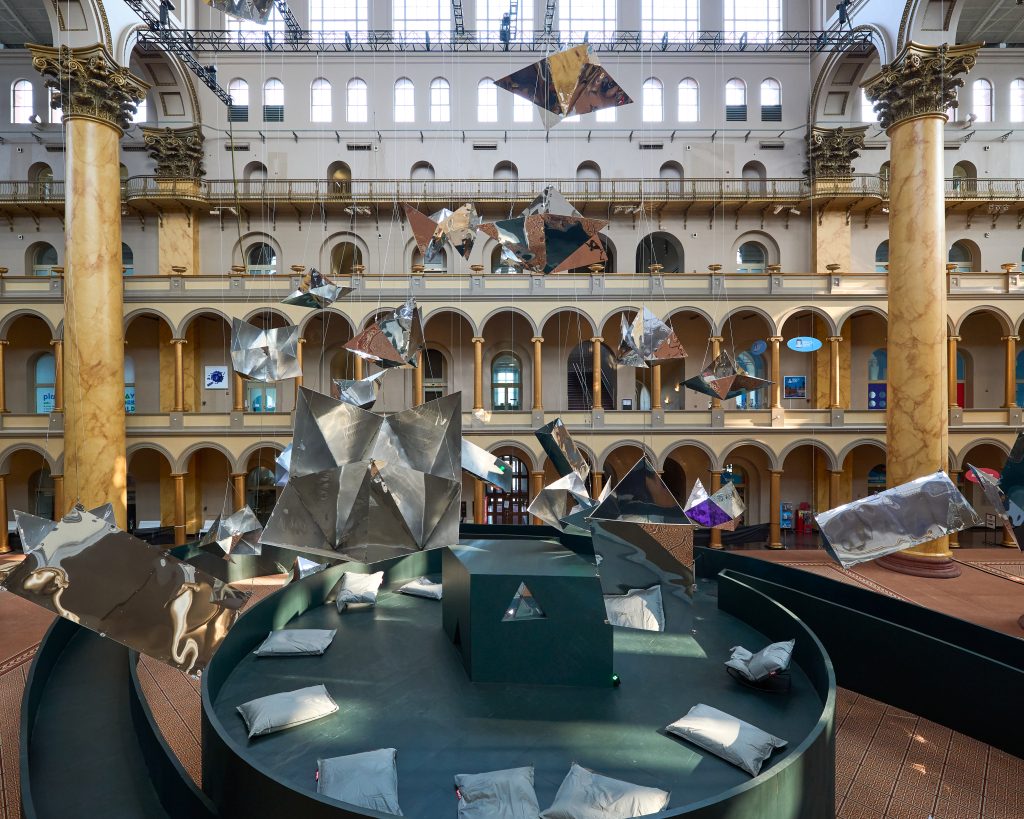
The scale of Reddy’s installation initially stops museum goers in their tracks as they grapple with its magnitude—it then also helps them to understand the vastness of the space. “I started with an idea that encompassed all three sections of the atrium but then we decided it made more sense to make it a central experience,” Reddy explains. “As I kept thinking about it, I wondered more and more about the meaning of the word perspective. I am always thinking about both the architecture and the emotional aspect of my work. Perspective is a mechanism that we use to understand space. It’s also an emotional and psychology vantage on life that’s so important to shaping how we understand everything around us.”
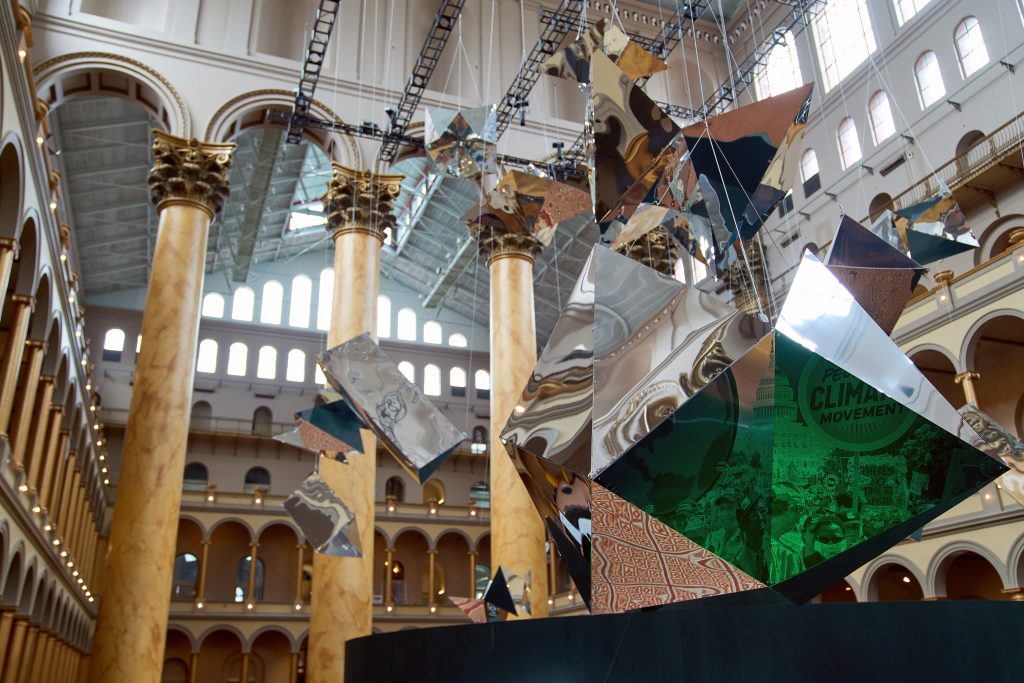
While immersed in research, Reddy came across an image of a “magic mirror.” It sparked a concept. “To me the world is magical. Physics is magical. Architecture is magical. If you break down the word magic,” she says, “it reads as something that provides you with the feelings of wonder, discovery, awe and delight, all in ways that are unexpected. That was what I wanted to accomplish with this installation.” Reddy’s mirrors take the shape of shimmering fractals—some rest on the ground, others dangle from the ceiling in clusters.
“We wanted to start from a very simple geometric exploration,” she says. “We are in this architecture that is incredibly Cartesian, defined by a North-South-East-West axis. It’s very symmetrical. For me, there was this subversive desire to use design as a Trojan horse—introducing within this very classic layout a rotated ellipse, a trapezoid, fractals, all of these things amid the grid, the columns, the arches.” Reddy intended for one visual language to disrupt the other, in the hope that new meaning was born.
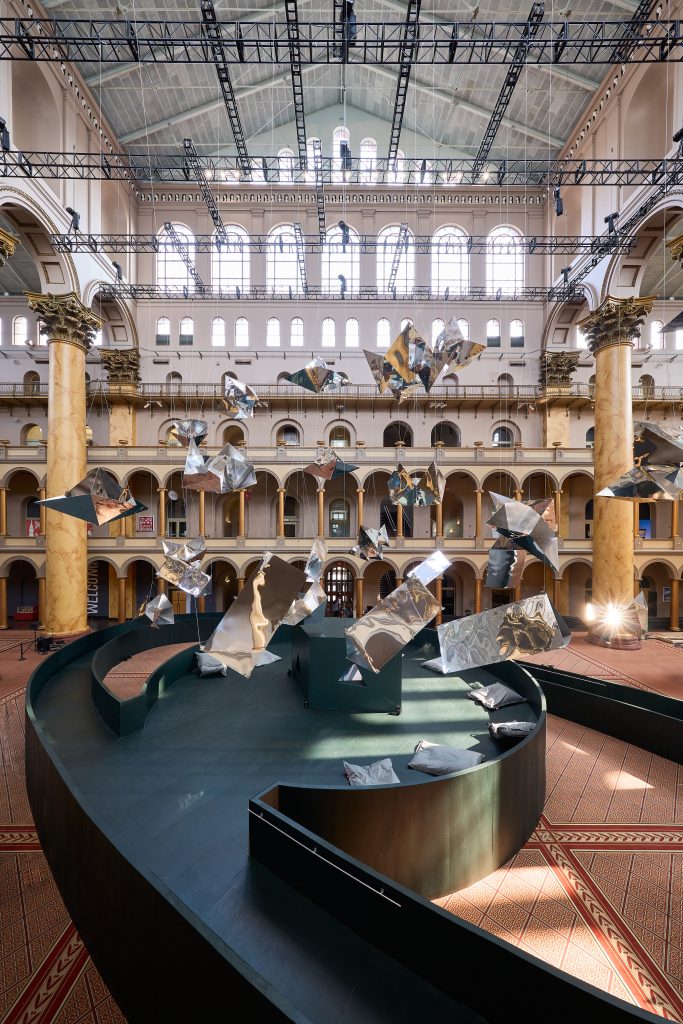
The elliptical ramp is more than an access point closer to the individual pieces, but an invitation into the more cerebral components of the experience. “To have you walk through to the central circle, where you kind of feel held, in this more appropriately sized space, allows you the opportunity to experience everything with newfound agency,” Reddy says. “These three ideas—equity, empathy and agency—underline my work. Look at yourself. Lie on the couches. Observe the environment. Understand that you have a choice, as to who you are and how you are reflected and what you say. It is my hope that this helps you to understand the beauty of your own humanness.”
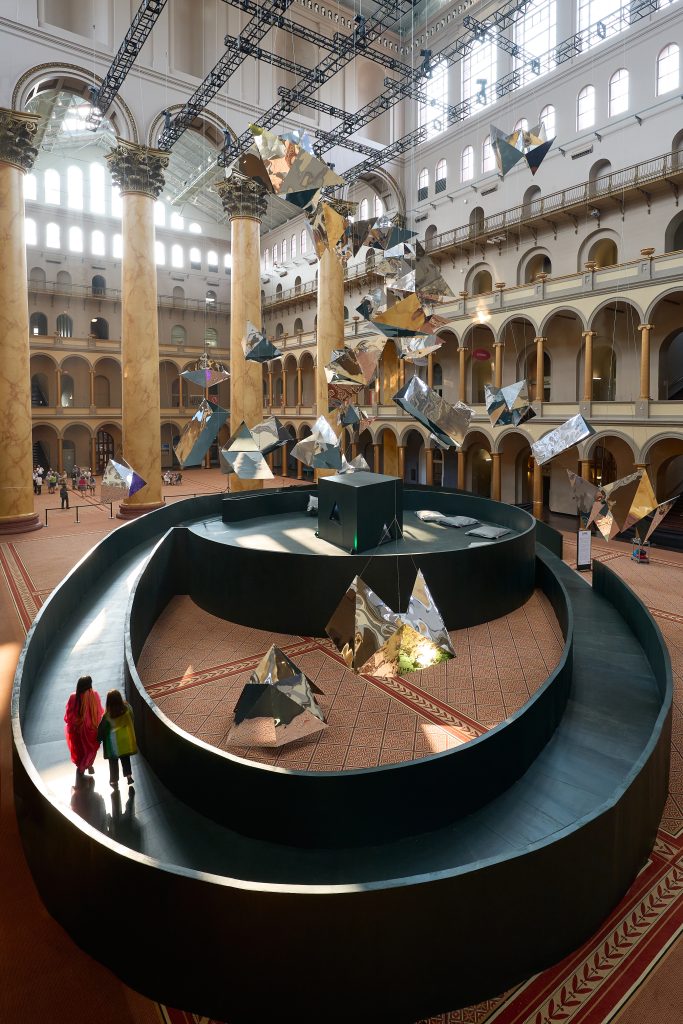
Of course, in a tactile sense, proceeding up the elliptical ramp and gazing upon the fractals reduces the height of the space and slices it into new dimensions. “We have been able to alter the space in a way that empowers the visitor,” Reddy continues. “It makes you feel like this was designed for you. It gives you a journey to embark upon where you can hopefully learn something about yourself. These are all the greater aspirations of architecture and installations like this are an opportunity to explore them.”

Reddy’s inclusion of activist iconography nods to her passion for history, and her own personal path. “Being an immigrant to this country, I felt it was very important to highlight the history of DC and make everyone who enters feel apart of that,” she says. “In this age of reflection, where we are reflected constantly through images on social media, I wanted to question the very idea of it. I wanted to use reflection as a method to reflect the architecture but also place you inside of these vital activist moments.” These scenes require further contemplation and act as a bridge between the self-reflection found in the other fractals and the wonderment of the entire artistic spectacle.
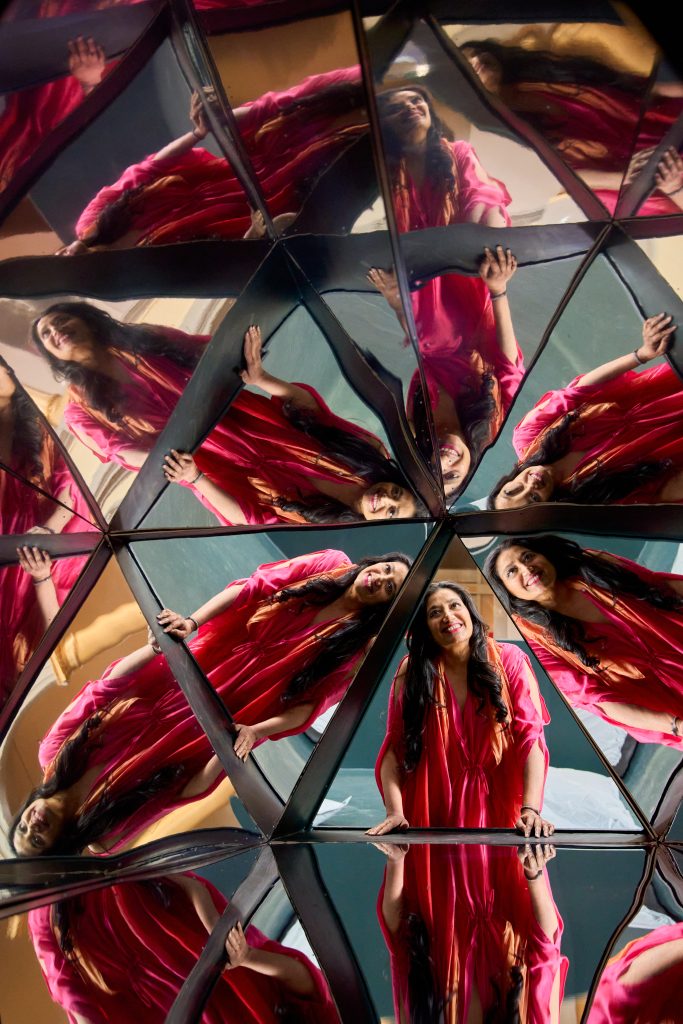
At the center of the elliptical ramp, Reddy set a geometric monolith with a kaleidoscopic core. “When you peer in, you see yourself reflected in all of these facets,” Reddy says, “as a way to ask if you understand all of the possibilities of your being. It is an emblem that asks if you can live up to the wonder of you. It’s a bit of a challenge.” It’s a microcosm of Reddy’s capabilities—artistic and architectural, infinite and intimate. And for anyone who doesn’t want to dig deeper, it’s also just a pleasure to look at—from any angle.
Look Here runs through 4 September at the National Building Museum.


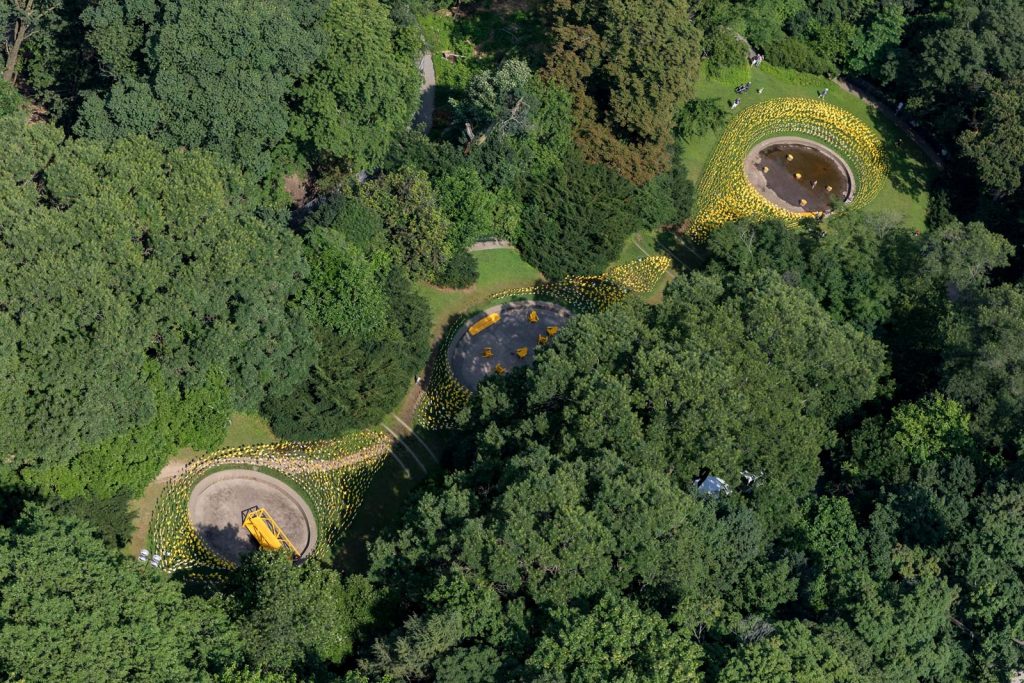
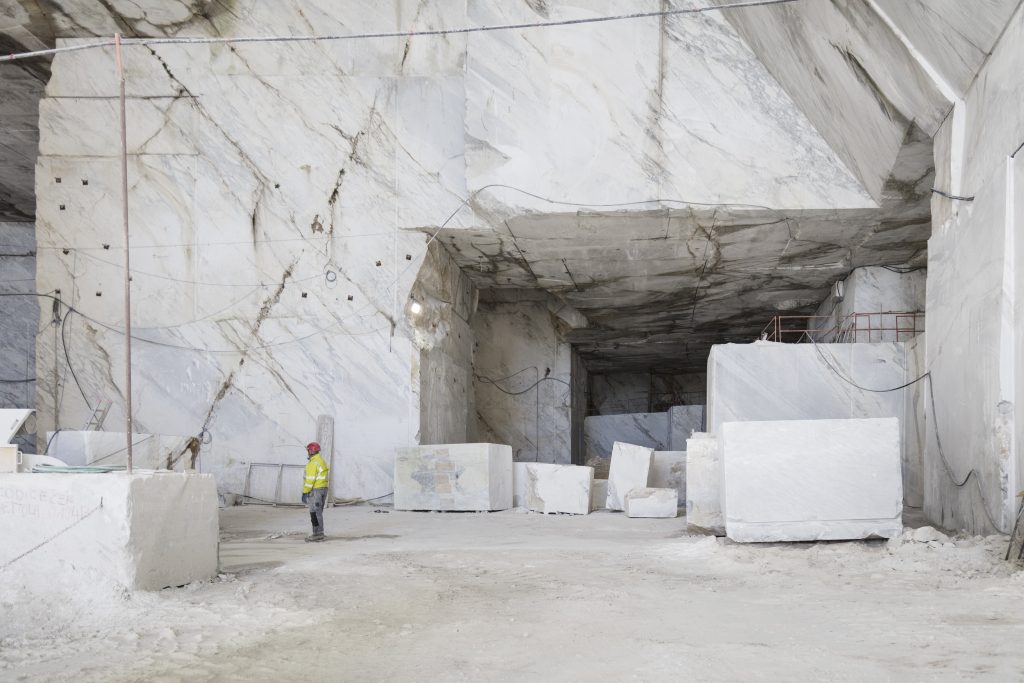



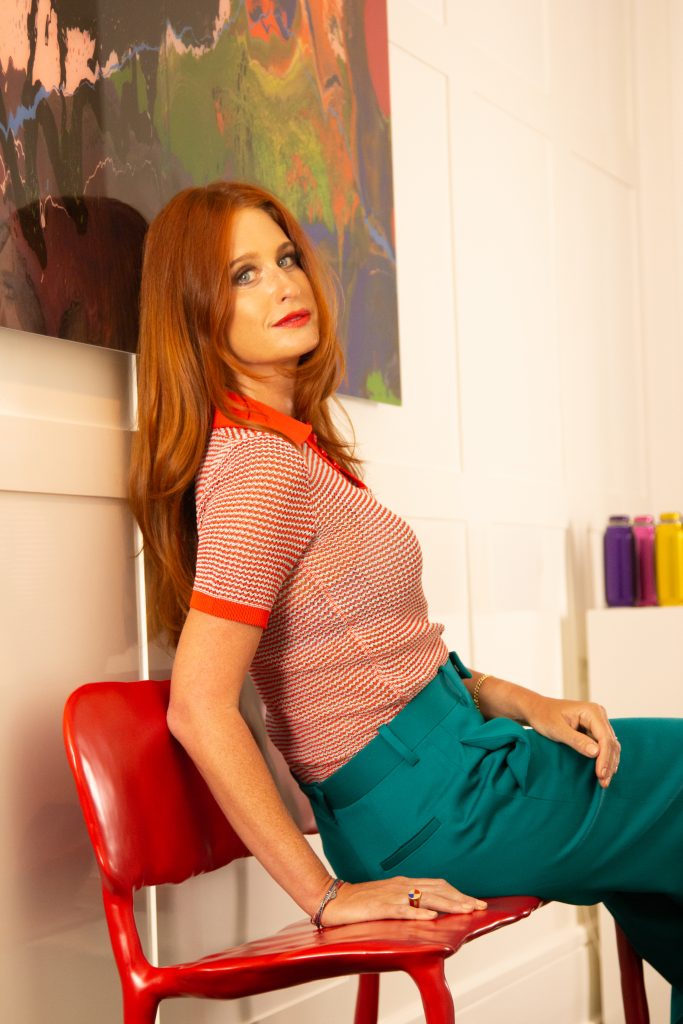

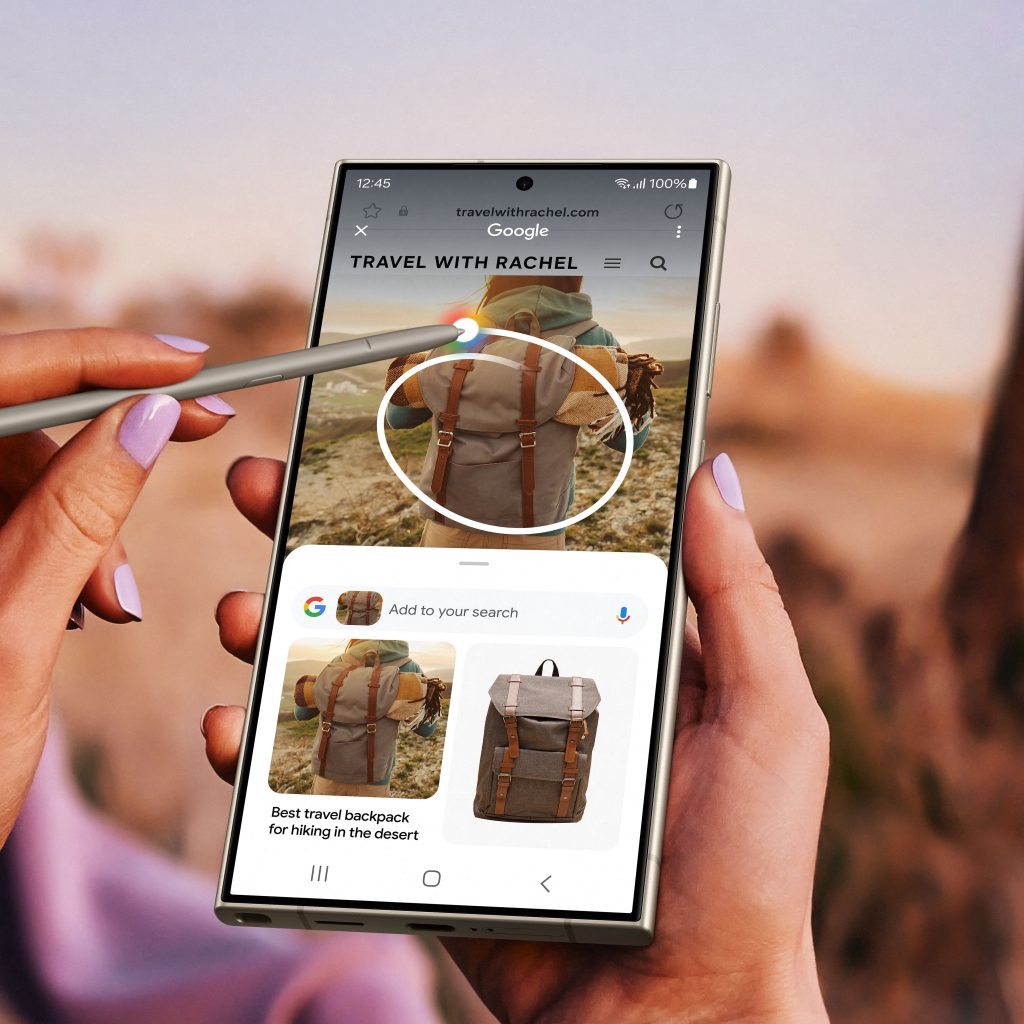

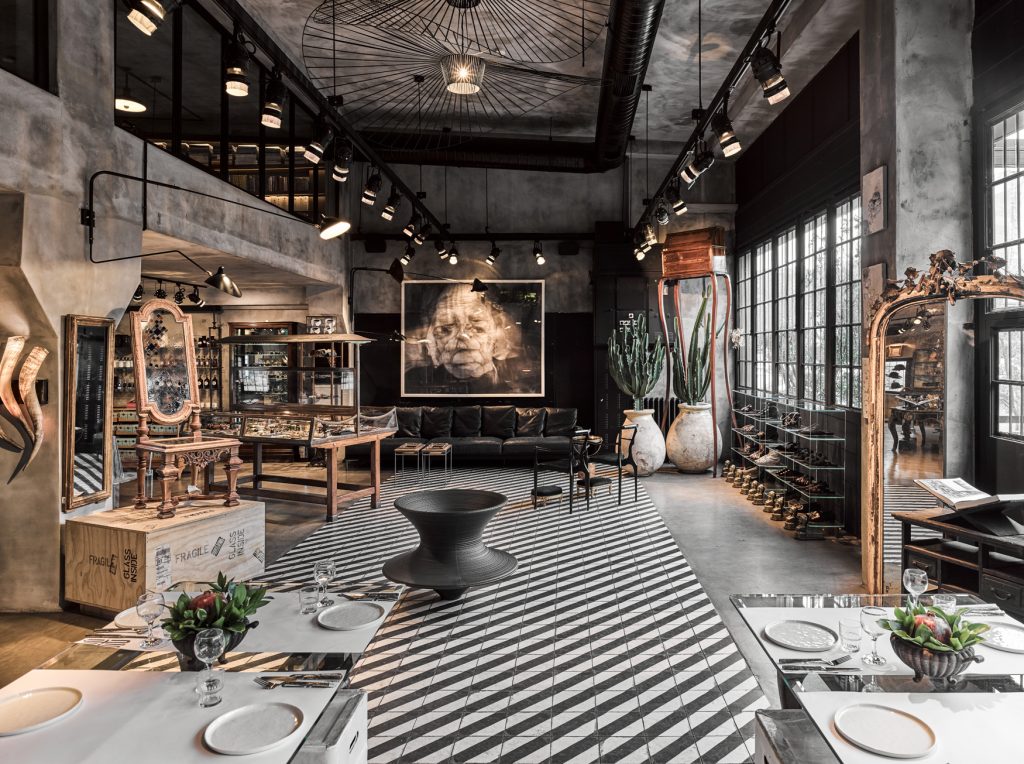
What are your thoughts?